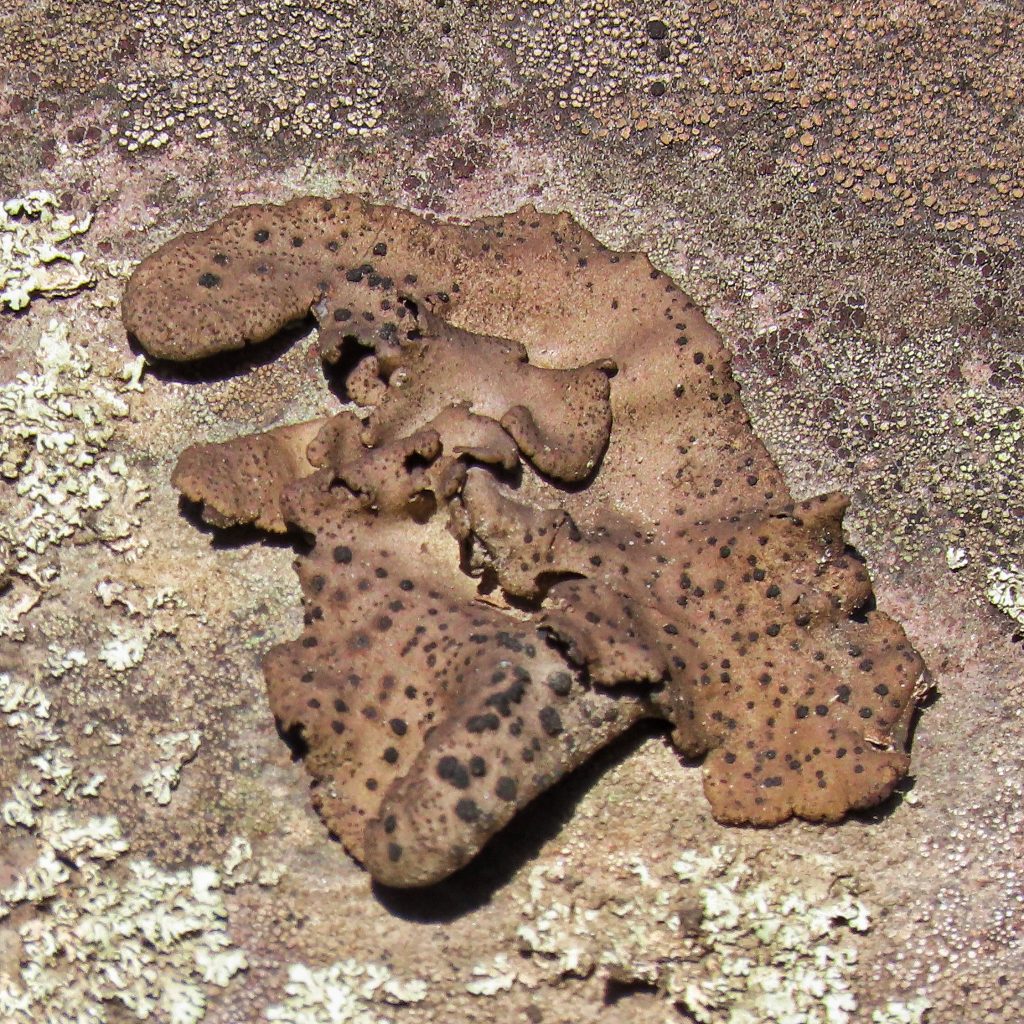
This is a very common lichen on dry rocks. It is so common that it has engendered a rarity; a lichen with a standardized common name. Right there on Lichen Portal, about as purely scientific of an organization as you’ll find; Emery Rock Tripe. Part of that standardization is undoubtedly because Umbilicaria as a whole are commonly referred to as rock tripe. This is possibly because they are relatively edible, and have been used as starvation food by Native Americans and early settlers. In fact some Umbilicaria is considered to be a delicacy in Asian countries. Thanks to one of my readers, Linda Carroll, for telling me about this!
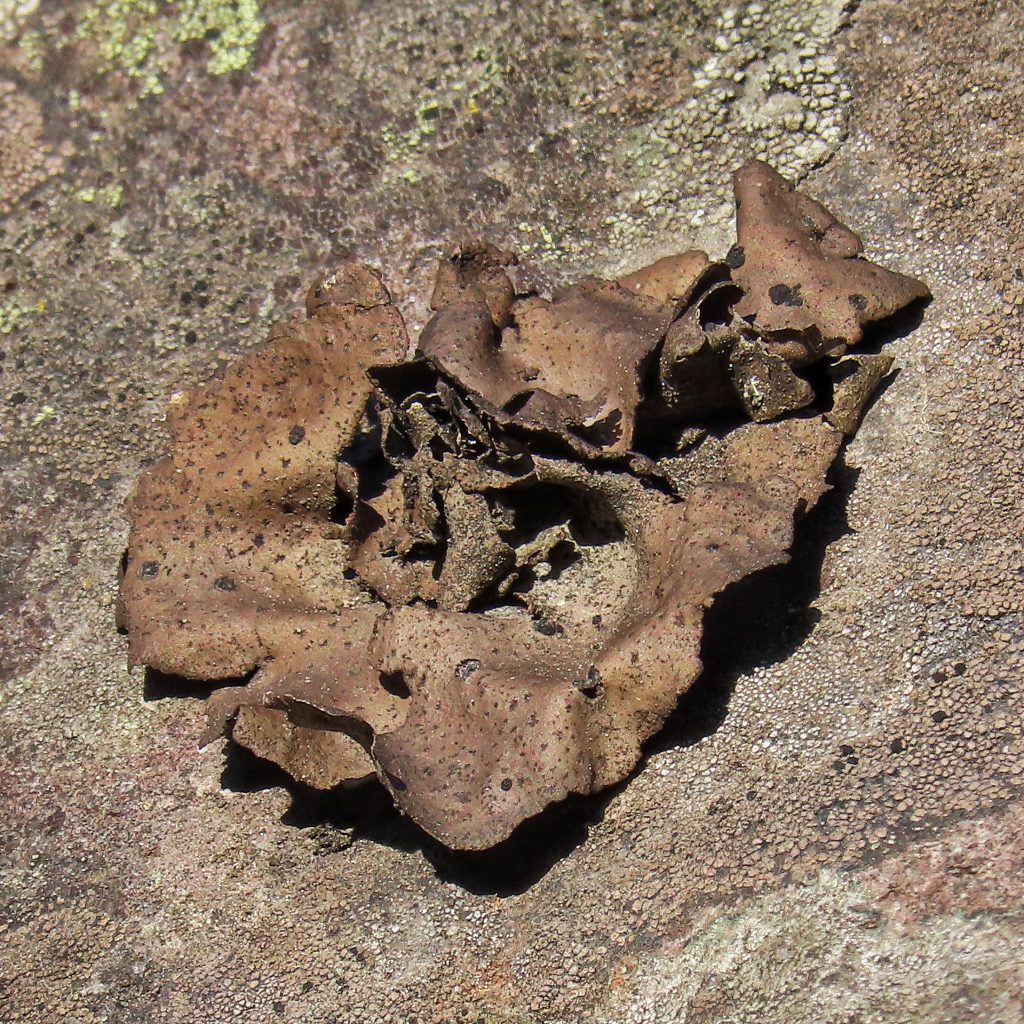
Because of a lack of confidence, issues of color blindness (especially as it relates to my seeing of greens as browns), the tendency of many of these lichens to be so dry as to shatter when I try to prise a specimen from the rock, and general laziness, this is the first Umbilicaria that I have positively identified.
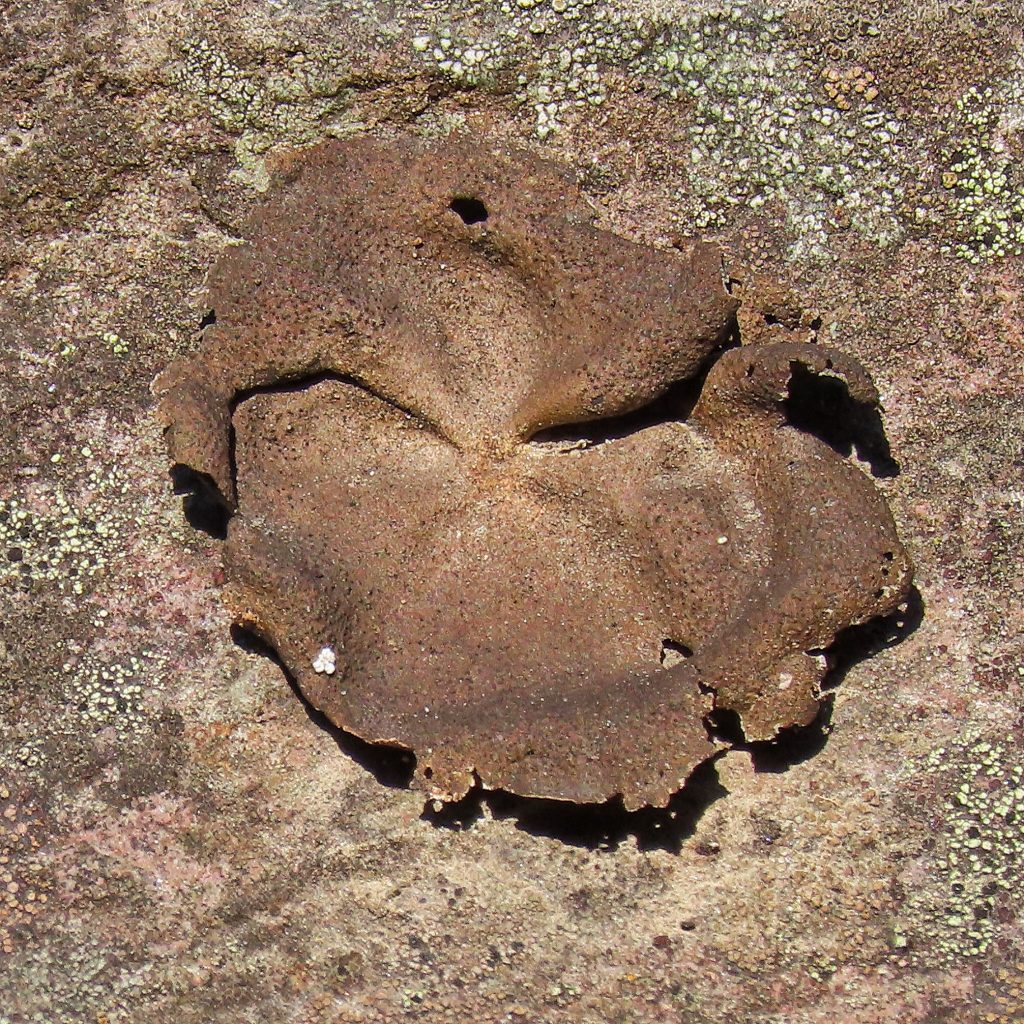
Not only did I get lucky that this lichen is easily distinguishable by the presence of obvious (with magnification) papillae and the absence of rhizines, but I discovered that they aren’t, as a group, as indistinguishable as I had feared. In fact I am now really looking forward to attempting to identify the next Umbilicaria that I find.
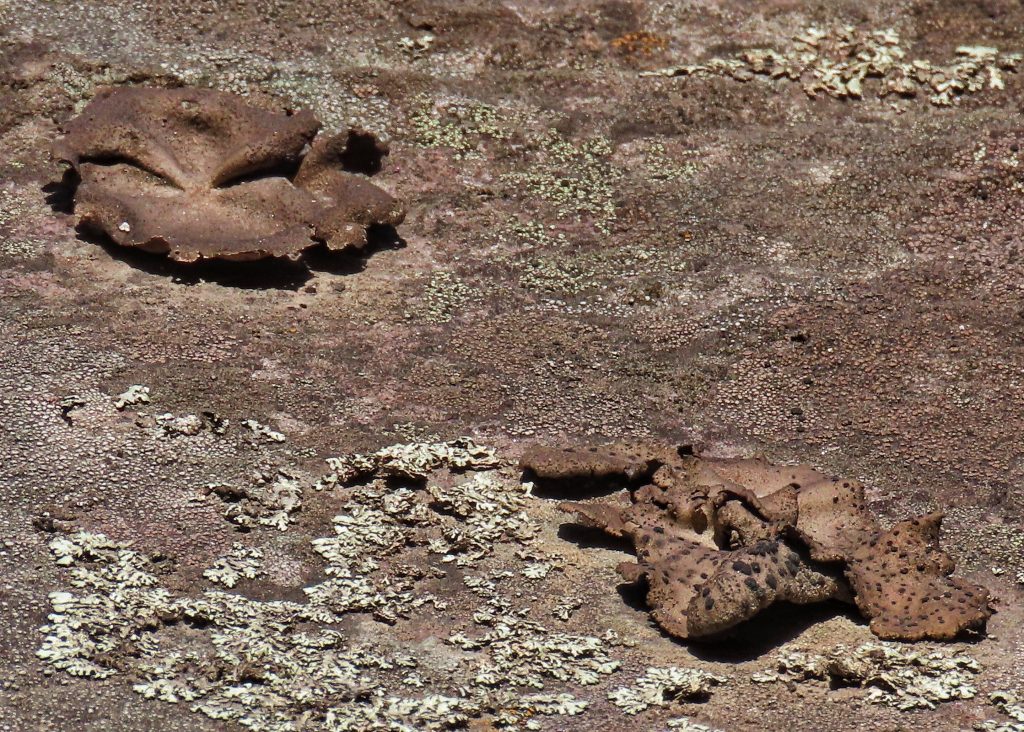
A big part of the reason for that is that these lichens are very interesting under a microscope! They have oddly geometric apothecia with distinctive shapes, somewhat hieroglyphic furrowing, and varying degrees of immersion. And they just look really cool under magnification! Factor in the sheer will-to-survive displayed by their preference for one of the least hospitable environments imaginable, bare rock in direct sunshine in arid habitats, and I can hardly wait to go looking for more Umbilicaria!
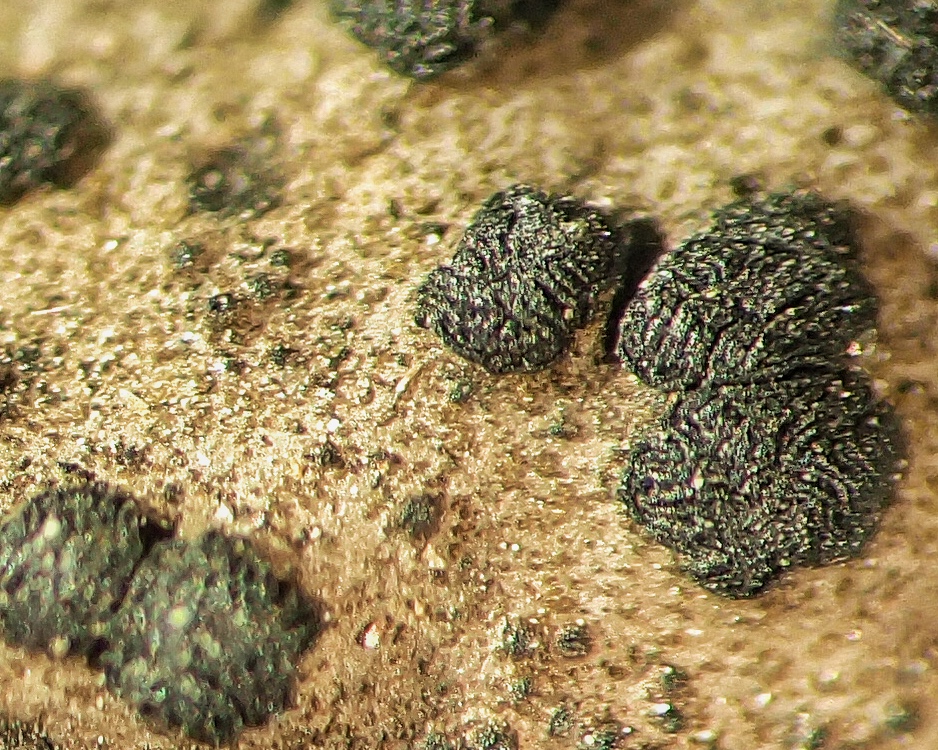
Description-Circular to lobed thallus which is usually around 5cm in diameter; brown dorsal surface with abundant black, wrinkled apothecia which are mostly embedded in the thallus; lacks soredia and isidia;ventral surface light brown to black, papillose (bumpy); lacks rhizines.
Similar species-There are over 20 species of Umbilicaria in our region, and several of them are superficially similar to this one. Magnification and a key are vital for positive identification; Dermatocarpon sp. are usually much greyer; U. angulata is the only other Umbilicaria which is papillose on the ventral surface, but it has rhizines and is usually all black ventrally.
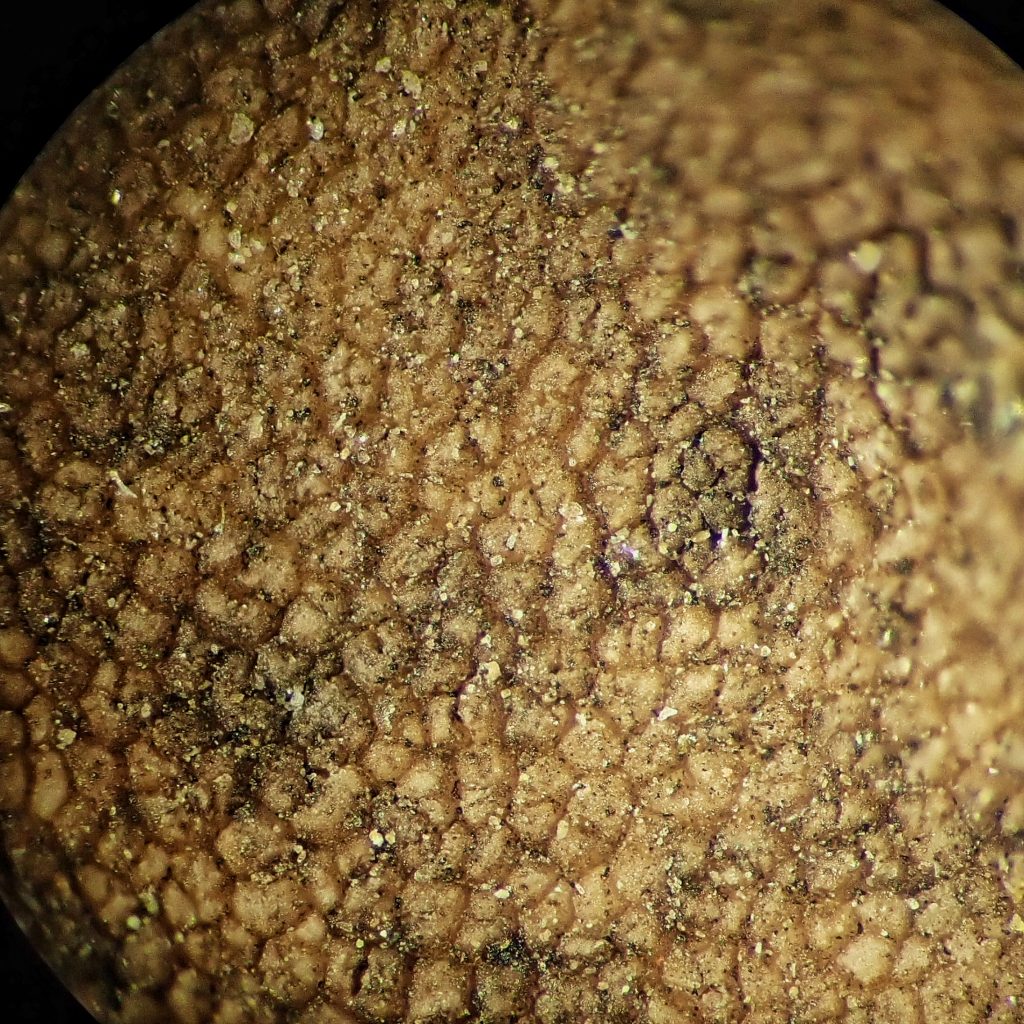
Habitat– Open to moderately shaded non-calcareous rock (which basically means basaltic or granitic rock in our region) and boulders, from low to middle elevations; Occasionally alpine.
Range– Western North and South America; Region wide in appropriate habitat
Etymology of names– Umbilicaria is from the Latin for navel. It refers to both the depressed, circular, navel-like form of the lichen, and to the presence of a single holdfast attaching it to the substrate. The specific epithet phaea is from the Greek for dusky/dark complexion, and refers to the color of the dorsal surface.
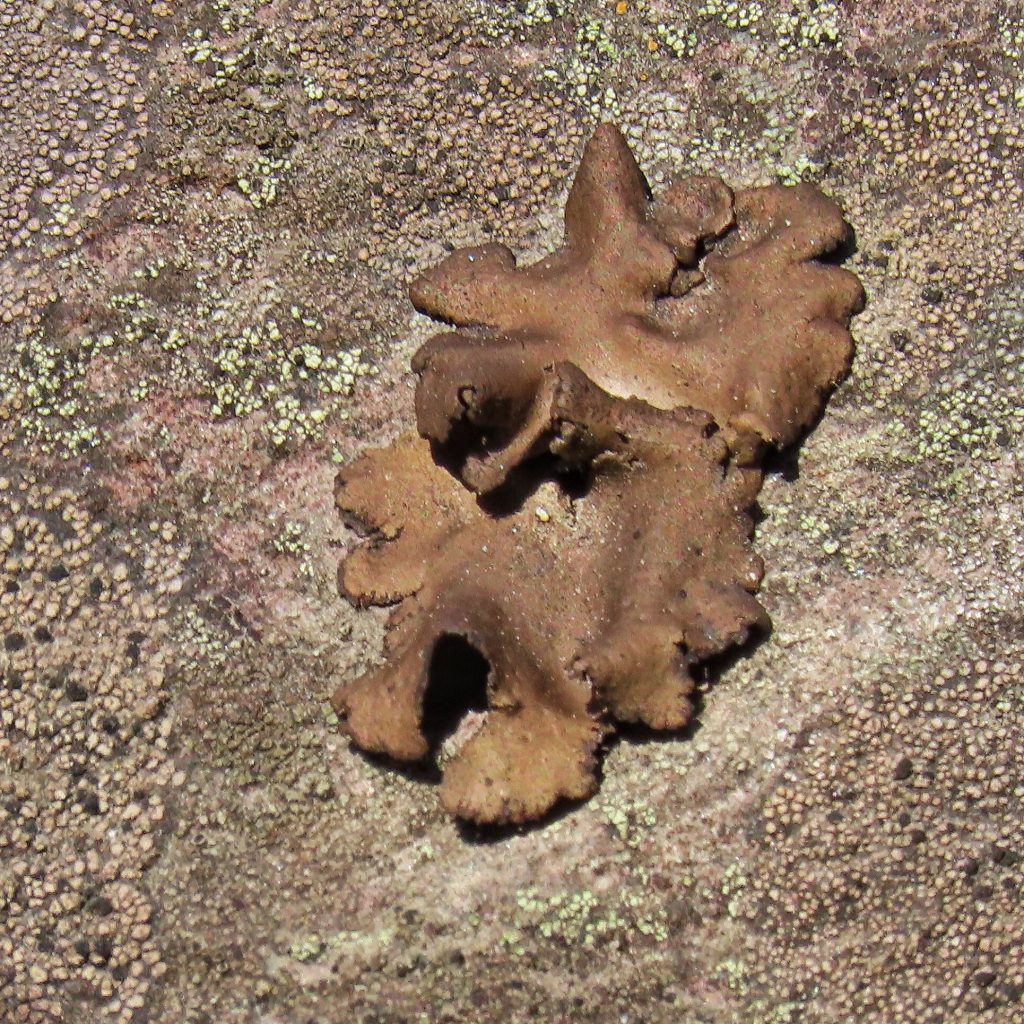
Umbilicaria phaea – Common Macrolichens of the Pacific Northwest
https://lichenportal.org/cnalh/taxa/index.php?taxon=55674&clid=1092
https://www.waysofenlichenment.net/lichens/Umbilicaria%20phaea
http://linnet.geog.ubc.ca/Atlas/Atlas.aspx?sciname=Umbilicaria%20phaea
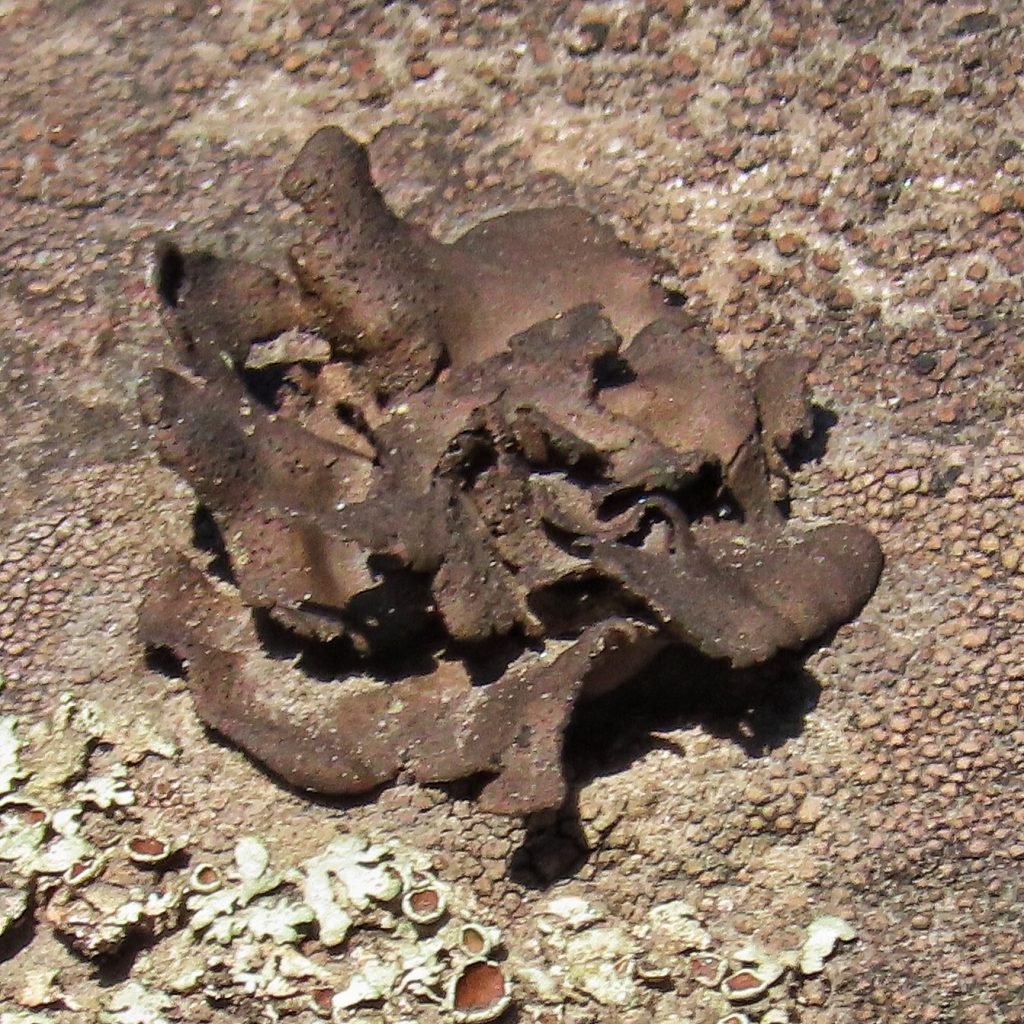
It seems to me that the adjective “lazy” would be the last thing anyone would apply to you!
It’s always a battle between my curiosity and my laziness. 😏Fortunately curiosity often wins😉
Cool stuff! 👍🤩